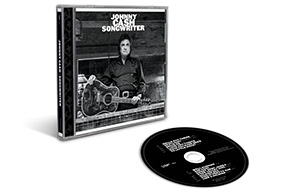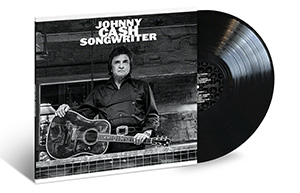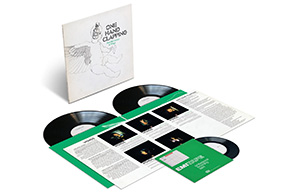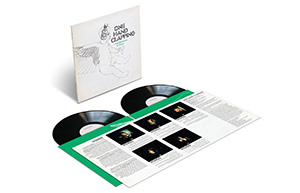Doc Watson’s Unique Approach To Guitars and Flat-Picking
Doc Watson’s flat-picking guitar style was a marvel. This liner notes excerpt explains how he developed it.

In 2021, Craft Recordings released Life’s Work: A Retrospective, a career-spanning collection that celebrates the life, music, and enduring influence of the iconic guitar virtuoso Doc Watson. In addition to the 100+ tracks, the set included extensive liner notes by Grammy-nominated author and compilation producer Ted Olson, plus never-before-seen photos. In this excerpt from the box set, Olson writes about Doc Watson’s guitars and the unique style he used to play them.
Finger picking
Doc Watson was a skilled performer on banjo, harmonica, and autoharp, but the fiddle proved to be a tough nut to crack. Doc’s failure on the latter instrument, though, led directly to his developing an innovative stylistic technique on his main instrument. As he explained in 1980 (on the nationally televised Toni Tennille Show), “I wanted to play the fiddle when I was, oh, 18 or 19, but the best I could get out of the thing was the sound of a hungry pig, so I decided to do a few of the old fiddle tunes on the guitar with a flat pick.”
Order Doc Watson’s Life’s Work: A Retrospective here.
When first learning the guitar, Doc had used his fingertips to play what he heard on Carter Family 78s, but he ultimately determined that “I could play that Carter stuff a lot better with a flat pick.” When he began picking out fiddle tune melodies on the guitar, Doc tried to play the necessary notes of some tunes with flat-picked down strokes on the strings, before realizing he could improve his right-hand technique by striking strings up and down with his flat pick; this allowed him to sound all of a tune’s notes in evenly articulated strokes. Thus was born Doc’s signature flat-picking technique. His longtime bandmate Jack Lawrence assesses the impact of this technique:
While Doc didn’t really invent flat-picking, he brought flat-picked acoustic guitar to the forefront and showed everybody how it was done. Though others in early bluegrass music used a flat pick—including Don Reno and George Shuffler—Doc broadened awareness of the approach through his virtuosity. There would be no guitar solos in bluegrass had it not been for Doc showing the way, even though he never considered himself a bluegrass musician.
Doc was quick to acknowledge that, in developing his own flat-picking style, he had been influenced by two country guitarists: Hank Garland (Doc loved Garland’s 1949 recording of “Sugarfoot Rag”) and Grady Martin (a former fiddler who was especially adept at interpreting fiddle tunes on the guitar). As Doc said (in an interview for the instructional video Guitar Artistry of Doc Watson), “I thought, hey, if they can play fiddle tunes that smooth, I believe I can play one or two, so I worked at it.” Doc also drew inspiration from three other guitarists who used a flat pick: Nick Lucas, the first jazz guitarist to make recordings as a solo act; Django Reinhardt, the gypsy jazz legend; and Fay “Smitty” Smith, who when performing with Ernest Tubb in the early 1940s pioneered the sound of the electric guitar in country music.
Doc also regularly practiced finger-style guitar, picking up techniques while listening to 78s by such legendary guitarists as Riley Puckett, Maybelle Carter, Charlie Monroe, Mississippi John Hurt, and Chet Atkins. Making the deepest impact upon Doc, though, was Merle Travis, whose finger-style guitar technique was popularly known as “Travis picking.” According to Lawrence, “Doc learned most of his finger-style playing from Merle Travis and was very true to that style, using just the thumb and index finger of his right hand. Doc muted the bass strings with his palm and played a strong alternating bass pattern with his thumb as he played the melody with his index finger.”
When playing finger-style guitar, Doc, like Travis, used a thumb pick and a finger pick on his index finger. Doc also emulated Travis’ charismatic approach to singing (full-throated vocals, with carefully enunciated yet fluid articulation of lyrics). When finally meeting his guitar hero in a Nashville studio in 1971 during recording sessions for the album Will the Circle Be Unbroken, Doc related that he had named his son after Travis (Eddy Merle Watson—the first name was in honor of country singer Eddy Arnold). Doc said, “Well, I figured that a little of that good guitar picking might rub off on him [Merle Watson]”—to which Travis responded, with a knowing chuckle, “Look who’s talking!”
Doc Watson’s guitars
Doc became associated with several guitars. After growing up around acoustic guitars, Doc in the 1950s joined a country/rockabilly band and played an electric Les Paul guitar. Then in the 1960s, to gain traction on the folk music circuit, he used two Martin D-18 guitars—initially an early 1940s model he borrowed from his friend Joe Cox, and then a 1945 model he bought in New York City and continued to use through the 1960s—the one featured on his first (eponymous) Vanguard album cover.
In 1968, Doc began his long affiliation with the Tennessee-based Gallagher Guitar Company, when the head of the company, J. W. Gallagher, met Doc at a festival and loaned the guitarist a mahogany instrument (Gallagher’s G-50 model). It was a demonstration guitar with a crack in it, but Doc loved its tone and nicknamed the instrument “Ol’ Hoss” (Doc can be seen holding the guitar on the album cover for Ballads From Deep Gap). Doc played “Ol’ Hoss” for a few years, including during the 1971 Will the Circle Be Unbroken sessions. The guitar, after being returned to the Gallaghers, was eventually exhibited in the Country Music Hall of Fame and Museum and, in 2012, auctioned by Christie’s, selling for $40,000 to comedian Ed Helms. Doc continued to play Gallagher instruments, and in 1974 the company introduced the first of several “Doc Watson signature model” guitars. In later years, Doc also played instruments made by three leading American luthiers: John Arnold, Dana Bourgeois, and Wayne Henderson.
Doc tried to extract the best-possible sound from all his acoustic guitars. As T. Michael Coleman recalls, Doc would place a small transistor radio inside a guitar—with the radio turned on to produce sound waves that could speed up the seasoning of the instrument.










